This is considered a miracle in sustainable poverty reduction; these are "special national projects" of "Party's will, people's heart", of national love, compatriots' love, with profound humanistic significance when thousands of families in the province live in warm homes of love, tens of thousands of lives have a bright future.
In the newly handed over house, Mrs. Pham Thi Nam (73 years old, Trung village, Ia Lop commune) beamed with a smile to welcome visitors. In the midst of the difficult border area, the solidly built house with brick walls and a sturdy roof became a warm support for the woman who has spent her whole life attached to the new economic zone. Seeing Mrs. Nam busily making tea for guests, her eyes clearly showed joy and emotion, everyone was happy.
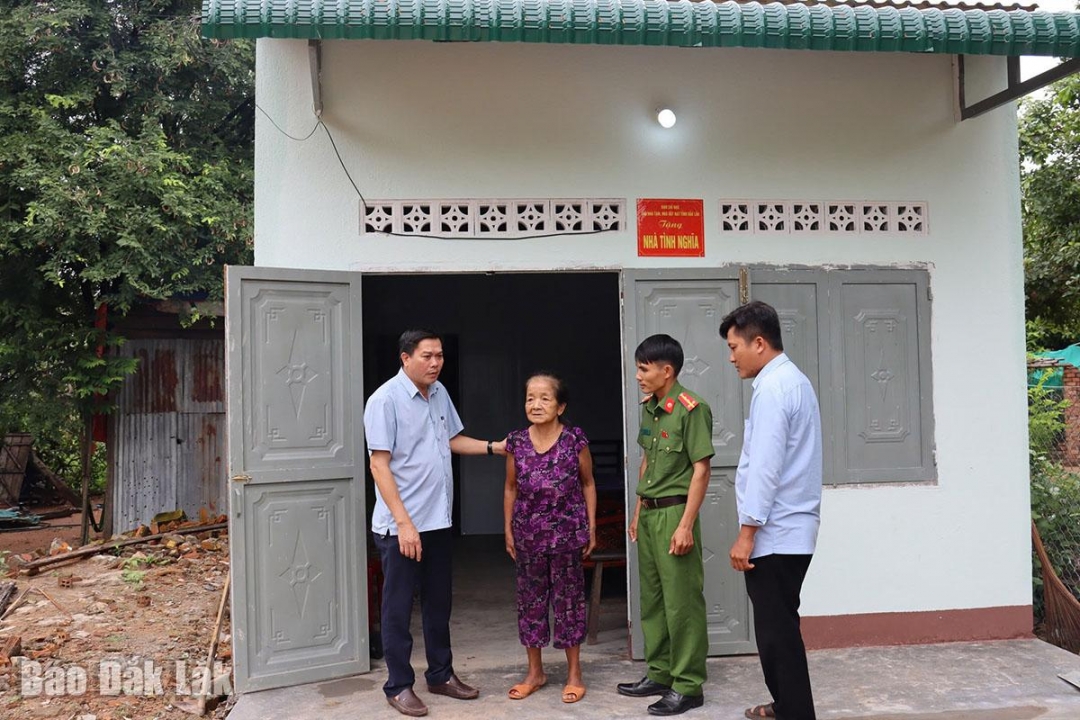 |
| Ia Lop commune officials and commune police visited and encouraged Ms. Pham Thi Nam after receiving support to build a house. |
Mrs. Nam recalls that in 2002, along with hundreds of households in Ben Tre province, her family left the river countryside to the Ia Lop border area under a national defense economic project. In the new land, each household was given a level 4 house and 1 hectare of land for production. Like other households, with diligence, hard work and perseverance, her family gradually stabilized their lives and settled in this challenging land.
“In the coming time, departments, branches, sectors and local authorities need to continue to pay attention and support so that households who have just built houses can "settle down", striving that by 2030, together with the whole country, Dak Lak province will basically have no more poor households in the spirit of Directive No. 05-CT/TW dated June 23, 2021 of the Secretariat on strengthening the Party's leadership in sustainable poverty reduction by 2030”. Provincial Party Secretary Nguyen Dinh Trung |
However, after her husband passed away, all the hardships fell on the shoulders of the woman with three children. Mrs. Nam alone shouldered the whole family, raised her children to adulthood, and then got married... For many years, she lived alone in the dilapidated house; her children's economic conditions were not so good so they could not support her in repairing the house. Therefore, when the State supported her to build a house under the Program to eliminate temporary and dilapidated houses, Mrs. Nam was extremely happy. "Before, living in a dilapidated house, it was hot and stuffy when it was sunny, and it leaked everywhere when it rained, it was miserable in every way. Now that we have a solid house, my children who live far away feel more secure knowing that I have a solid roof to rest in my old age," Mrs. Nam confided.
The family of Mr. Y Bral Bkrong (80 years old, Tri hamlet, Buon Don commune) is one of the commune's particularly difficult circumstances. Three households of four generations, with nine members, live crowded together in a small, old, cramped house. In 2003, Mr. Y Bral Bkrong's family received support to build a House of Love, but over time the house has deteriorated. Understanding that difficulty, from the budget for removing temporary and dilapidated houses, the locality has supported 30 million VND to repair the house for his family. Within just 10 days, the house was repaired to be spacious, clean and handed over to the family for use. From now on, Mr. Y Bral and his children and grandchildren can rest assured to gather under a solid roof, to continue to stabilize their lives.
The houses of Mrs. Nam and Mr. Y Bral Bkrong are just two of nearly 9,000 houses built in the Program to eliminate temporary and dilapidated houses in the province. In the picture of life in the villages, solid roofs gradually spring up to replace temporary and dilapidated houses, becoming a solid foundation for people to settle down and make a living.
In addition to providing housing, authorities at all levels also focus on supporting livelihoods, creating jobs and stable income, helping people escape poverty sustainably, feel secure in their jobs, promote creativity in work, study and development, and realize the goal of sustainable poverty reduction.
As a single mother of 5 children, Ms. Ksor Ho Lon (Le Diem hamlet, Song Hinh commune) had to work for hire everywhere, while her 2 older children with hemophilia were sent to their uncle and 3 younger children lived with their grandmother in a dilapidated wooden house. Faced with the family's difficult situation, the Song Hinh commune government called for and mobilized nearly 200 million VND and persuaded Ms. Ho Lon's mother to give them a part of the land to build a new house, helping her and her children have a stable place to live.
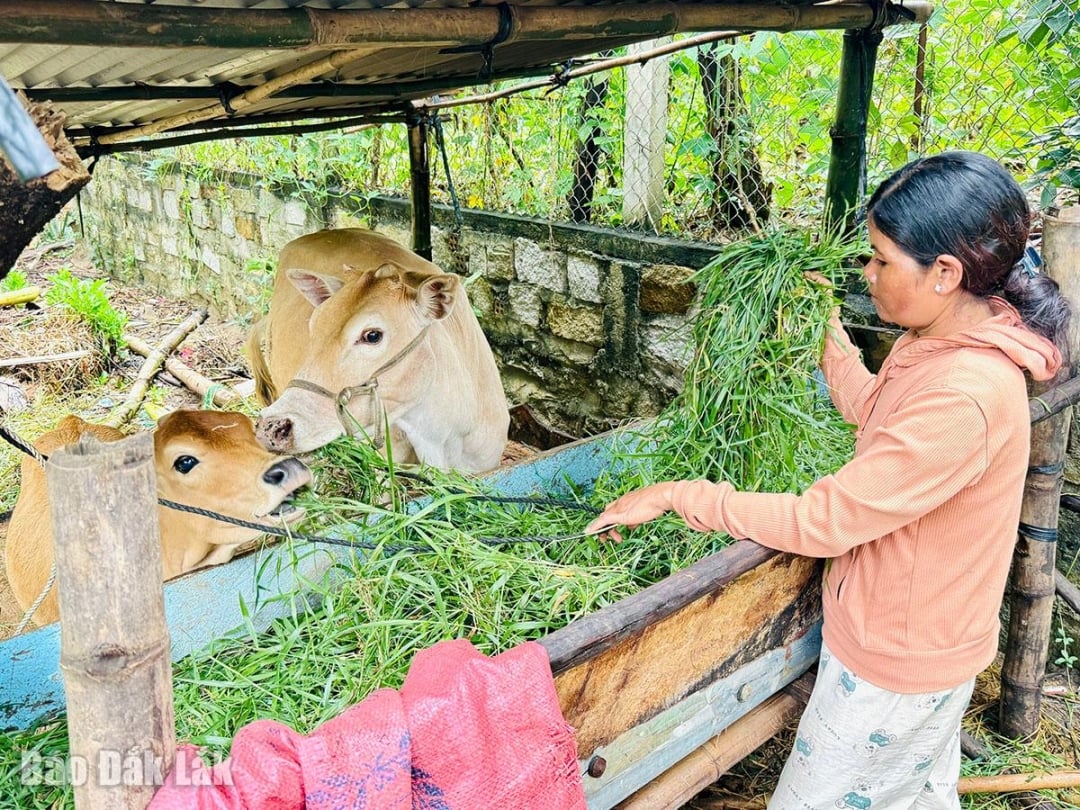 |
| Ms. Ksor Ho Lon takes care of cows with support from the commune government to develop the economy. |
After building a house for about 150 million VND, the remaining amount was used by the Song Hinh commune government to buy two breeding cows to help her develop her economy, and at the same time open a savings book of 30 million VND to support her in raising her children to study. Touched by that concern, Ms. Ksor Ho Lon shared: “For many years working for hire, I only had enough money for food, medicine, and treatment for my children, so I never thought of having my own house. Now, thanks to the help of the government and the community, my children and I have a new house, cows, and savings. With these two cows, I will stay home to take care of my children and cows well to develop the economy and escape poverty.”
Similarly, in Ia Lop commune, where the poverty rate is still high, the local government also pays special attention to creating livelihoods for people, especially households receiving housing support under the Temporary Housing and Dilapidated House Elimination Program. It is known that, implementing this program, Ia Lop commune has 268 households receiving support to build new and repair houses. Mr. Nguyen Van Hieu, Chairman of the Commune People's Committee, said: "For poor and near-poor households in general, and households that have just received support to build houses in particular, the most important thing is still creating livelihoods to help them "settle down and have a career". Determining that, the locality will focus resources from the Poverty Reduction Program and other support sources to build livelihood models through giving trees, seeds, livestock and vocational training... to help them have conditions for sustainable economic development, improve their material and spiritual life".
It can be seen that completing the goal of eliminating temporary and dilapidated houses is only an important step in social policy. The core is still to continue to promote production and business, create jobs and livelihoods, constantly improve the quality of life and material and spiritual life for the people; encourage people to escape poverty sustainably, strive to get rich and contribute to society.
Source: https://baodaklak.vn/xa-hoi/202509/mai-am-cho-dong-bao-toi-ky-cuoi-589227e/





![[Photo] Bustling Mid-Autumn Festival at the Museum of Ethnology](https://vphoto.vietnam.vn/thumb/1200x675/vietnam/resource/IMAGE/2025/10/4/da8d5927734d4ca58e3eced14bc435a3)
![[Photo] Solemn opening of the 8th Congress of the Central Public Security Party Committee, term 2025-2030](https://vphoto.vietnam.vn/thumb/1200x675/vietnam/resource/IMAGE/2025/10/4/f3b00fb779f44979809441a4dac5c7df)
![[Photo] General Secretary To Lam attends the 8th Congress of the Central Public Security Party Committee](https://vphoto.vietnam.vn/thumb/1200x675/vietnam/resource/IMAGE/2025/10/4/79fadf490f674dc483794f2d955f6045)
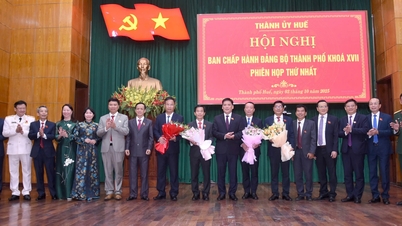

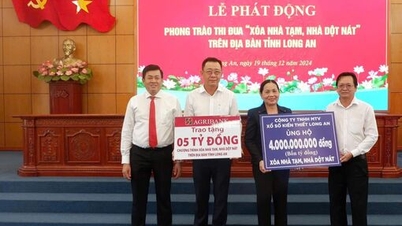

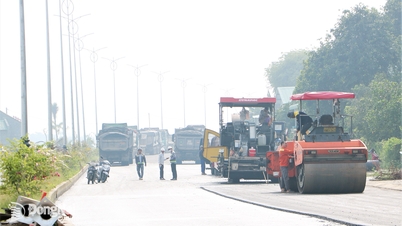




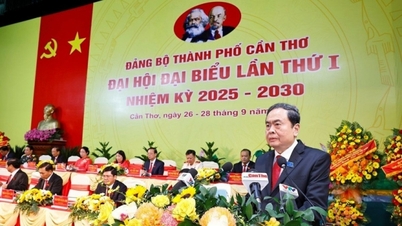

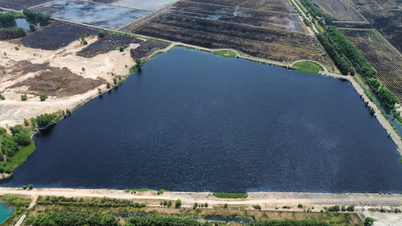

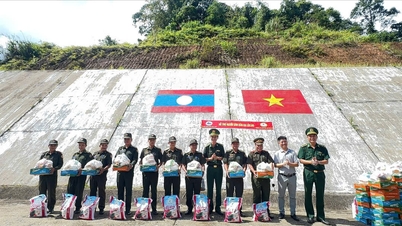
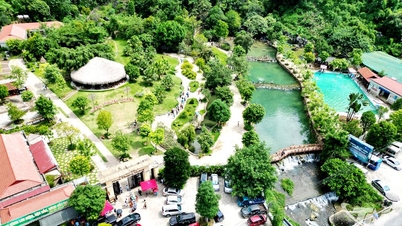

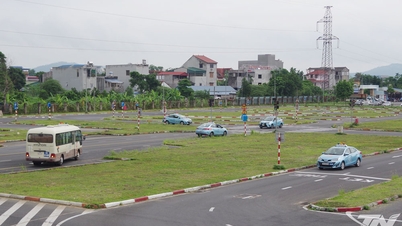
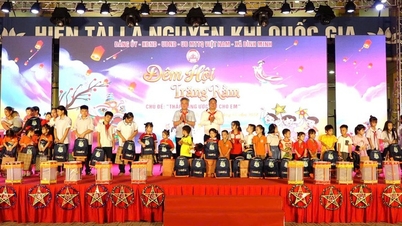

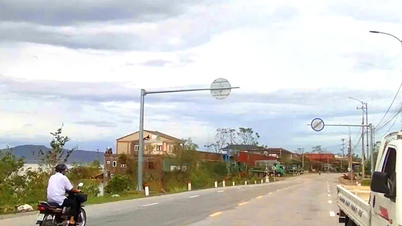




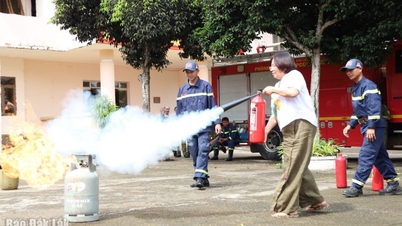
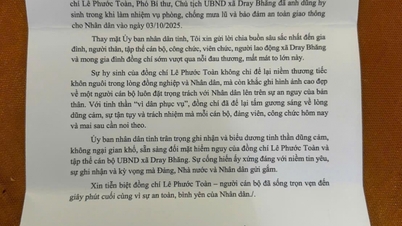




![[Infographic] Notable numbers after 3 months of "reorganizing the country"](https://vphoto.vietnam.vn/thumb/1200x675/vietnam/resource/IMAGE/2025/10/4/ce8bb72c722348e09e942d04f0dd9729)

























![[VIDEO] Summary of Petrovietnam's 50th Anniversary Ceremony](https://vphoto.vietnam.vn/thumb/402x226/vietnam/resource/IMAGE/2025/10/4/abe133bdb8114793a16d4fe3e5bd0f12)
![[VIDEO] GENERAL SECRETARY TO LAM AWARDS PETROVIETNAM 8 GOLDEN WORDS: "PIONEER - EXCELLENT - SUSTAINABLE - GLOBAL"](https://vphoto.vietnam.vn/thumb/402x226/vietnam/resource/IMAGE/2025/7/23/c2fdb48863e846cfa9fb8e6ea9cf44e7)

















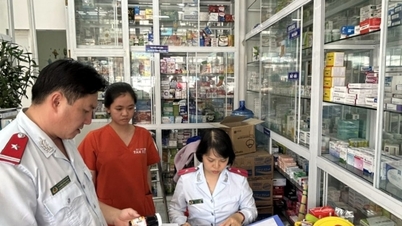



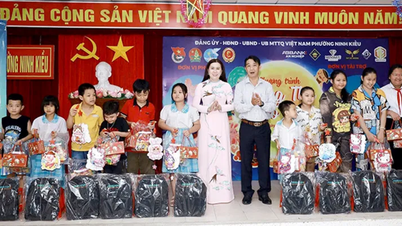

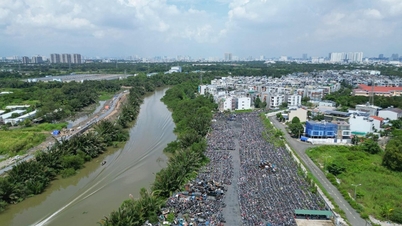

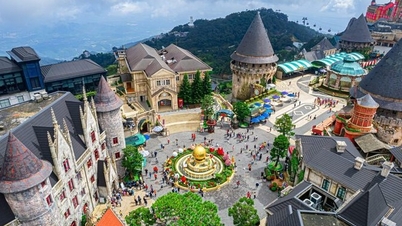






Comment (0)